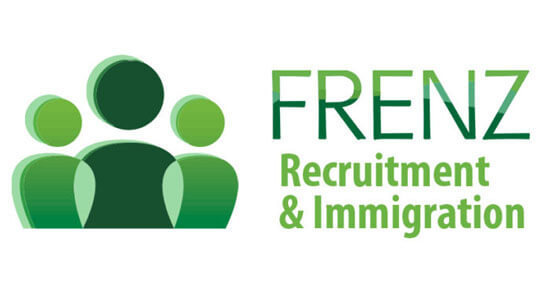Home>> News and Resources>>Health and Safety for Your Farm
Some helpful thoughts on farm health and safety
Kelly Middleton is a FRENZ Recruitment alumni who began working in Health and Safety in 2015 and, seeing a need for better health and safety in the dairy farming industry, started her own Health & Safety consultancy. As part of her work and continuing studies, Kelly is focused on keeping regulatory policy as simple and easy to understand as possible, and helping farmers and farm managers to navigate the process of implementing these practices and policies effectively.
Given the increased importance Health & Safety regulation adherence plays with Labour Inspectorate, we asked Kelly for some thoughts on key questions of interest to dairy farmers.
![]()
1. What H&S factors do you think would most surprise farmers (e.g., the impact of fatigue)?
There are so many factors to consider when it comes to farm health and safety, none of which I would say are particularly surprising to farm owners. I do believe that, when systems and processes to manage these factors are specifically designed for the particular farm, they can be much more effective when implemented.
Fatigue is a classified hazard and, therefore, it is essential to manage the causes and effects of fatigue. During calving the hours of the farm workers are dictated by the birthing cows, and are very seldom regular- this would result in broken sleep, extended physically demanding work hours and extended exposure to cold.
There is unfortunately no ‘one size fits all’ solution to this. It can be said that there are some types of work that require a 24hour operation, and this is unavoidable; therefore, it would not be a realistic recommendation to farmers to limit operating hours during this time. Instead a more direct approach to limiting the risk and harm associated with irregular hours would be the most “reasonably practical” solution for fatigue management in this instance.
![]()
2. As we come into calving and work hours increase, most workers aren’t going to say ‘I’m tired and am a danger to myself and those around me.” How should farmers manage that?
Yes. It’s true that it’s very rare for a worker to be outspoken about how fatigue may be impacting their work performance, and not only from a safety perspective.
This is the reason it’s so important to have a robust monitoring and reporting system in place. If there is an increase in near miss or close call incidents, and these are monitored, a pattern very quickly emerges. The ability to recognise these patterns and proactively address them, can vastly improve the health and safety for all workers. Recent studies have shown that effective fatigue management can significantly reduce worker absenteeism and accident and incident rates.
As mentioned above, when worker hours are not able to be limited due to the demands of the calving season, other initiatives to ensure adequate rest and nutrition must be put in place and made available to workers.
For example, a 25-45 minute sleep during a shift break is 3 x more effective than a cup of strong coffee. Properly educating workers on hydration and nutrition, in addition to sleep cycles and sleep deprivation, gives them the knowledge to be able to make better choices for their well-being.
![]()
3. How do you suggest that farms ensure that the importance of and adherence to health and safety is not just the domain of the person whose formal job it is to manage it but become part of the culture?
My philosophy on this constant industry challenge is leadership by example. If farm owners, managers and senior staff are passionate and believe in their health and safety policy principles, the staff are much more likely to buy in.
Equally, good consultation practices between management and the workers allows the staff to have a say in health and safety procedures and initiatives. This allows a farm-specific culture to grow which will become stronger over time.
![]()
4. What value does a consultant such as yourself provide?
Working with a dedicated consultant provides two big benefits:
- having someone who can help balance between legal compliance with health and safety legislation, systems and processes that suit a specific farm, and then measuring the performance of these systems.
- having someone already familiar with your systems and challenges to give the on-going support required to take policy and procedures and convert these into practical results.
Speaking for myself and my background, there’s a third benefit. I am lucky enough to have 4 years’ experience in overseas recruitment and staff support specifically for dairy farming in New Zealand, along with three years’ Health and Safety experience. I understand the specific challenges, offer practical solutions and see these through to get results.
![]()
5. Given that you have a background in overseas worker recruitment and pastoral care, are there any H&S tips specific that group you can give to farmers?
One of the biggest challenges can be communication. I think being aware of the types of personalities that make up your staff is an essential component to effective communication. Although there are certainly tendencies within some cultures to remain silent and not question or clarify understanding, individuals are all different.
Effective communication across cultures is more likely if you use a variety of communication tools.
A face to face talk will not always be best, so providing a note pad or feedback section on your time sheet form as an alternative can sometimes yield better results, as an example.
And again, clarity and leadership by example will also help get the message across.
![]()
Finally, what’s happening within Health and Safety that farmers should be aware of?
There are consistently changes within the industry, it is important as part of the legislative duty of “due diligence” requirement of a farm owner to stay updated with these changes. This can be another benefit of having a consultant that works closely with you.
For example: Worksafe New Zealand has recently released guidelines on the use of farm vehicles. The publication was released in June 2018. This is a guide for best practice in the use of farm vehicles, there are also some very useful tips on the safe operation of farm specific vehicles. This would be good to circulate amongst your farm managers and supervisors and ensure that your farm is well across these recommendations.
This is available by clicking this link
![]()
You can contact Kelly at KSM Consulting directly to talk about your Health and Safety needs and questions
Call 0221 529 774
Email: info@ksmconsulting.co.nz
or Visit www.ksmconsulting.co.nz
You can also download the company information flyer here


![]()



